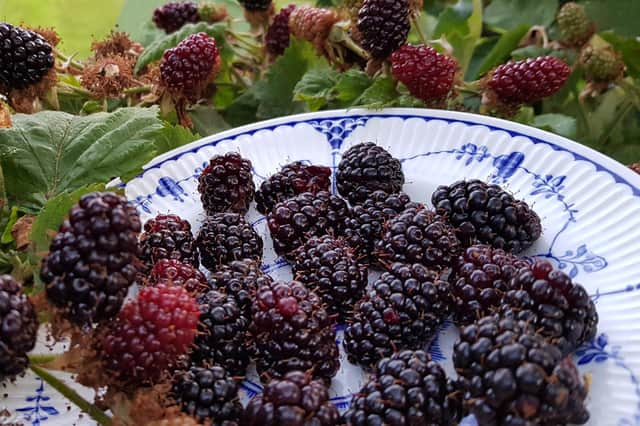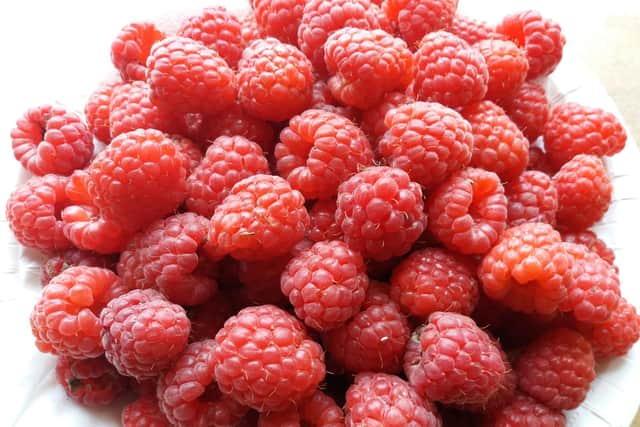Better progress after slow start to season


Although projects, activities and planning never cease, I do recognise a gardening year which starts and ends in line with the calendar. So, this is the equivalent of a half-term report.
There was a slow start to our season, with lingering frost, deeper into negative figures than usual for this garden. It took one or two plant prisoners and delayed progress outdoors. Growth was slow to begin with. Chitted early potatoes planted over the Easter period took well over one month to appear above soil level, but having done so, quickly got going, and continue delivering a good crop. This year has shown once again the value of starting vegetables off in cell trays and pots, then planting them out with strong roots and top growth when the weather allows.
Advertisement
Hide AdAdvertisement
Hide AdAn extended period without rain did little to encourage developing ornamental and edible crops. Then as we resolved to maintain growth momentum with regular watering, there was a request on the local media to avoid using hosepipes – most unusual for this region. Then came the rain. Some vegetable crops have delivered on time, others have been slower to respond, but we are getting there.


Potatoes, early salad crops, perpetual spinach, mange tout peas, courgettes and broad beans were the highlight of July, and August has brought garden peas, runner beans. onions and sweet corn to the table. Each has reached the regular benchmark in terms of performance so, there’s a feeling of achievement.
We are currently removing spent top growth of ‘The Sutton’ broad bean and sugar snap pea ‘Deliket’. Both have performed well and the crop surplus has been blanched, bagged up and consigned to the freezer. The leguminous roots of both these plants host nitrogen-fixing bacteria, so they are left in the soil to enrich it. When cooked, ‘Deliket’ was a revelation, its pods remaining stringless and tender even when filled with peas – it’s a certainty for next year’s seed order.
Clearing these two crops has created space for more winter vegetables. I raised ‘Musselbrough’ leeks in a cell tray, a tiny pinch of seed to each section.
Advertisement
Hide AdAdvertisement
Hide AdThey were potted up and some planted out in June. Now the remainder can join them!
‘SO FAR, SO GOOD’ FOR OUR GARDEN EDIBLES
Our soft fruits have been outstanding so far. It began with the strawberries delivering bowlfuls daily, prompting the lady of the house to reach for the jam pan with delicious lasting effect.
Most notable was the cultivar ‘Sweet Colossus’ planted two years ago. It’s first summer offering was disappointing but this time they’re bigger and better, and there are plenty of runners self-rooting.
A thornless blackberry ‘Loch Ness’ has also upped its game in terms of production and fruit size. We are growing it in association with dessert apples ‘Lord Derby’, ‘Bramley’ and ‘Scarlet Bramley’. I foresee lots of bramble and apple pie with custard over winter!
Advertisement
Hide AdAdvertisement
Hide AdThe raspberries buzzed with bee activity during those hot sunny days, securing a massive crop of fruits. Then the rain intervened positively, encouraging the swelling that precedes ripeness. There are some huge individual fruits this year. We’ve collected lots of them daily and given them space on cardboard plates that go in the freezer. They’re later transferred to bags until required.
The main crop, fruit-bearing stems will soon be spent, then we will remove them at ground level and tie in the strongest new canes to secure next year’s harvest. Meanwhile, the autumn varieties are gearing up to fruit. Some have bloom buds, others are in flower, and the first fruits are appearing on ‘All Gold’.
There’s an unbelievable crop on the redcurrant ‘Jonkheer van Tets’, with companions blackcurrant and gooseberry thriving alongside. They’ve been netting-protected so we can encourage total ripeness before picking. Although we could step in immediately after harvesting and prune them all, I prefer to wait until after leaf-fall. Then we get a full picture of which growths need to be removed. My mid-term report for the garden edibles reads ‘So far, so good!’